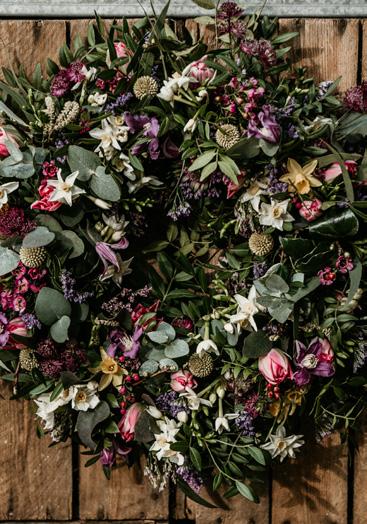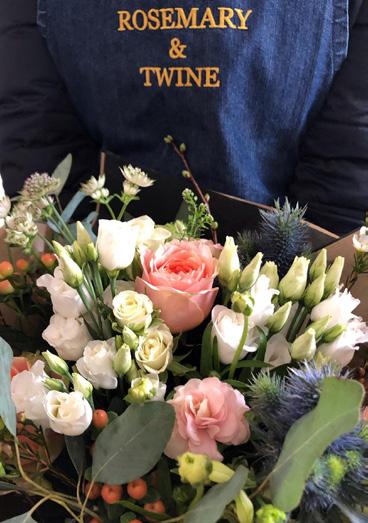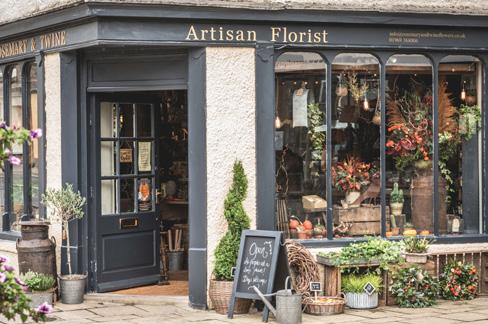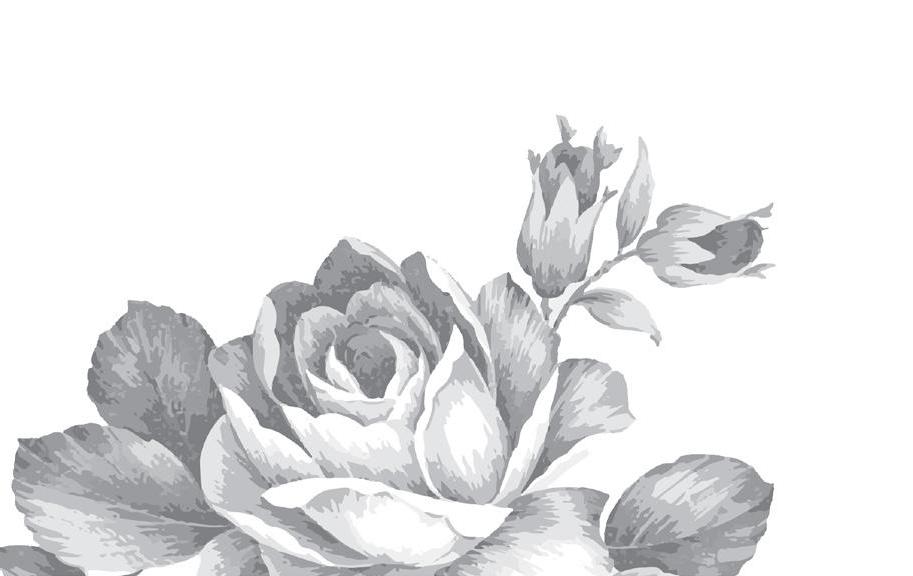
4 minute read
A DAY IN THE LIFE
by Dales Life

The florist
Advertisement
Amy Fairburn of Rosemary and Twine in Leyburn


How did you become a florist?
I have always loved flowers. My grandma was a keen botanist and used to take me on wildflower walks in the Dales and on trips to country house gardens. I took a course in floristry at Askham Bryan College and I have been working from home as a wedding florist for 12 years – in fact I’m the recommended florist at Bolton Castle. During Covid, of course, events were cancelled and I had nothing to do, so I started selling bouquets from home. They were very well received, so I decided to take the plunge and open Rosemary and Twine last autumn. Where do you get your flowers?
We shop online from specialist wholesalers, using British growers wherever possible and ordering little and often so that our stock is always fresh. A lot of what we buy from local growers comes as ‘mixed buckets’ – they send whatever happens to be at its best on that particular day. Not knowing in advance what we’re going to get makes receiving deliveries quite exciting, and it also encourages us to be creative! I also love foraging for flowers and foliage. I’m a country girl and I live on a farm, so we’re lucky enough to have our own woods and hedgerows. I use tree ivy all year round, and of course at this time of year there’s lots of wonderful blossom. What happens once the flowers have arrived?
A lot of the work we do – and which is where the skill and expertise of floristry lies – involves the careful ‘conditioning’ of every stem. Leaves need to be removed, and certain stems need to be prepared in certain ways. When you train as a florist you need to learn the stem structure, vase life and correct conditioning techniques for hundreds of different flowers. Woody stems such as lilac, for example, need to be cut at a certain angle and split down the middle, whereas hyacinths you don’t cut – you leave the bulb on. With roses we have to carefully strip off all the thorns, a time-consuming job that no-one likes. Red roses are especially thorny, but well worth the effort in the case of a variety such as ‘Naomi’, with its velvety petals and delicate scent.





How would you describe your floristry style?
We’re happy to work in any style, but we prefer a relaxed, natural look that lets the flowers be themselves. If the flowers lend themselves to being wild and whimsical then that’s the look we’ll aim for. When you order from us you know you’re not going to get a bouquet of run-of-the-mill things like chrysanthemums, carnations, gerbera and gypsophila. We like to use quality flowers for a high-end, luxurious result. The premium flowers we use may not necessarily last as long as the cheaper florists’ favourites, but flowers such as clematis and ranunculus are so beautiful that it’s worth sacrificing a few days of vase life. The best things in nature are fleeting! When it comes to making up your bouquets and arrangements, we gather you’re very eco-conscious.
We’re very proud to be a cellophane-free florist. When you look into it, even supposedly biodegradable cellophane doesn’t always live up to the claims sometimes made for it. Floral foam is something else we avoid wherever possible, because even ‘biodegradable’ floral foam turns out not to break down completely. So instead of preparing bouquets in ‘aqua packs’ we use glass jars – jam jars, coffee jars and so on – that people kindly save for us. And rather than using floral foam we’ve gone back to materials that florists used before floral foam became popular, such as moss and chicken wire. Another way we reduce waste is by drying flowers. We’re experimenting all the time – any stems that are left over we’ll hang upside-down and see whether drying works for them or not! What are the downsides of the job?


Floristry isn’t nearly as glamorous as everybody seems to think. For one thing it’s quite physically demanding. You find yourself standing and working in the cold for long periods; before Valentine’s Day or Mother’s Day you can be on your feet for 16 hours non-stop. Warm days are also a problem. Working on a marquee wedding with flowers that don’t like the heat can be really stressful. The seethrough marquees that are increasingly popular nowadays can be just like giant greenhouses! And what are your favourite moments?
I love making deliveries and seeing people’s surprise and delight at receiving a beautiful bouquet. Delivering on this last Mother’s Day was particularly lovely – all very emotional, thanks to the tough year we’ve had to put up with! What are your plans for the future?
In the long term I’m planning to grow my own flowers. Unfortunately we live in a very windy spot – perhaps we should start planting some windbreaks! For more information about Rosemary and Twine visit rosemaryandtwineflowers.co.uk or call 01969 368006.










